Uncategorized
Building a Covered Adolescent and Doe Horned Goat Feeder
Building a Covered Feeder
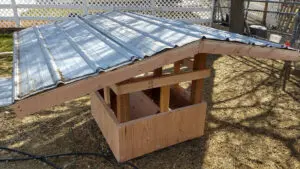
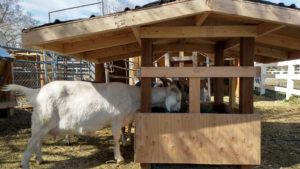
Building a covered feeder adds several significant advantages. Added material overhead further discourages adolescent males and adult does from entering the feeder and spoiling feed. Also, the wide roof design creates a desirable bedding and sheltered spot for goats. Additionally, the wide covered design keeps the surrounding high traffic area dry. This limits goats’ exposure to muddy conditions normally experienced around feeders. Also, goats will bed next to the feeder and limit waste by feeding from underneath the 4″ rise. This design protects both goats and feed from the elements, all while mitigating wasted feed and optimizing feed expense.
To build a covered feeder, build the feeder following the directions above but leave the 4×4 corner posts full length at 48″. The same tools are used as listed above.
Materials:
(8) 8ft 2×4 studs
(2) 4’x8′ sheet of 3/8″ plywood
Optional: Metal or other roofing material
Screws or Nails 3” for framing & 1 ¼” for sheeting
Cuts:
(2) 37″, 2×4
(4) 69″, 2×4
(1) 72″, 2×4
(4) 47 ¼″, 2×4 cut at 12 degree angle on one end
(4) 26 1/4″, 2×4 cut at 12 degree angle on one end
(2) 48″ x 72″, 3/8 plywood
For angled cuts, the length measurement is the long point from the square end.
Assembly
Step 1
Cap the tops of the vertical posts with (2) 37″ and (2) 69″ 2x4s opposite each other flush with the tops of the posts. As shown below.
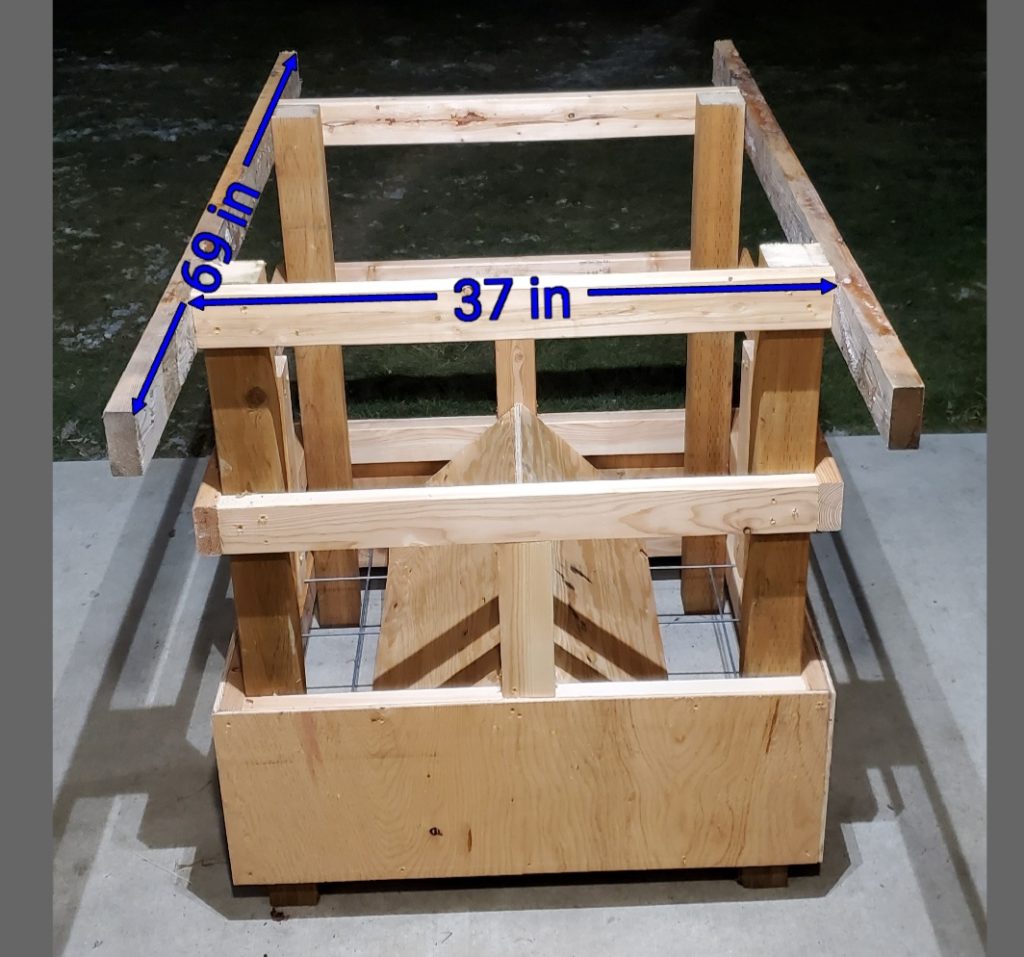
Step 2
On the 37″ sides, measure and mark from the end of the 37“ piece at 17 3/4″ and
19 1/4″ from one side. This gives you the center ridgeline location.
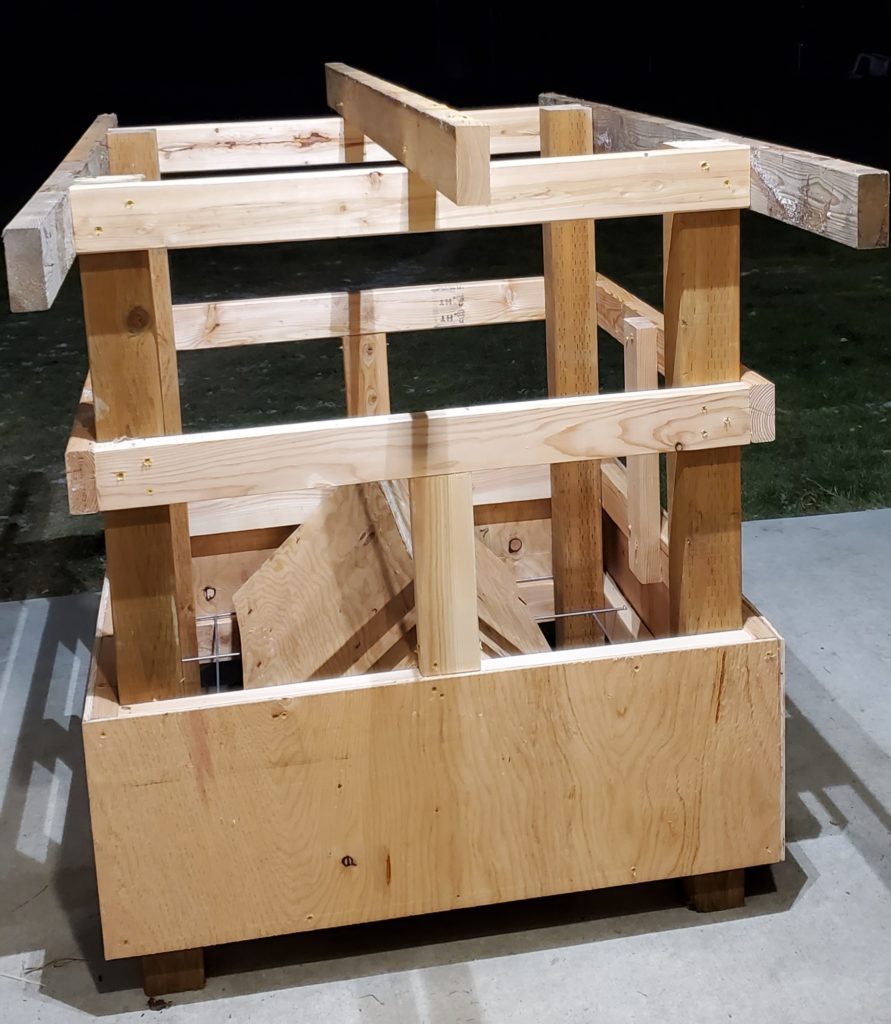
Step 3
Measure 16″ from each end of the 72″ 2×4 which will be the over hang on each end.
Step 4
Place the 72″ 2×4 on the center ridgeline location, parallel to the (2) 69″ sides and center using the 16″ marks off each end.
Step 5
Toenail the center ridge in place by angling nails in at 45 degrees from each side about 1/2 inch up the center ridgeline.
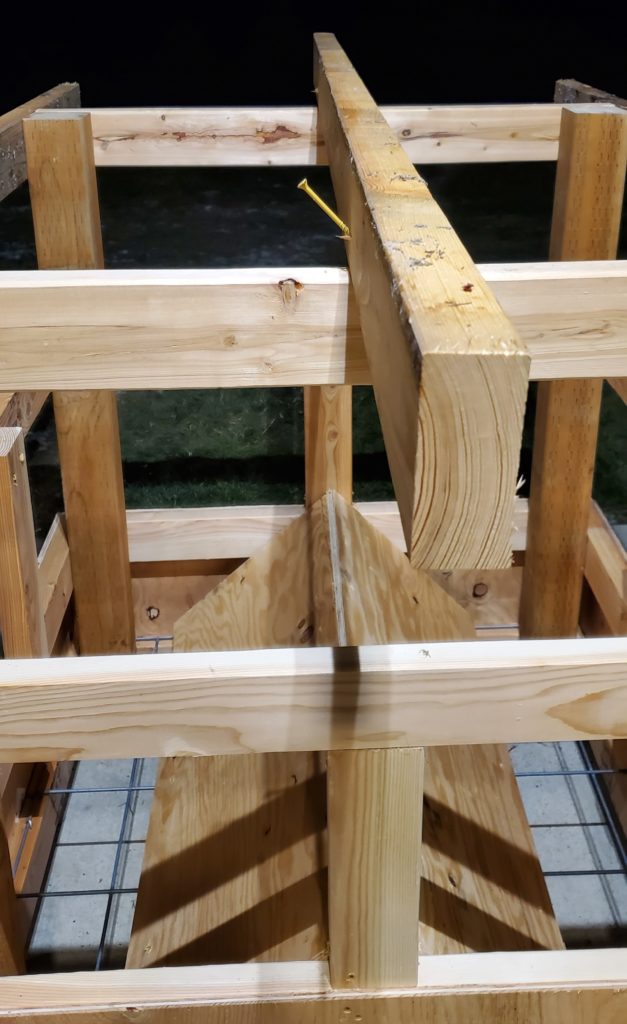
Step 6
From the top, nail a 47 ¼″ 2×4 truss cut at a 12 degree angle to each side of the peak, center ridgeline. Length is to the longest point of the 12-degree angle.
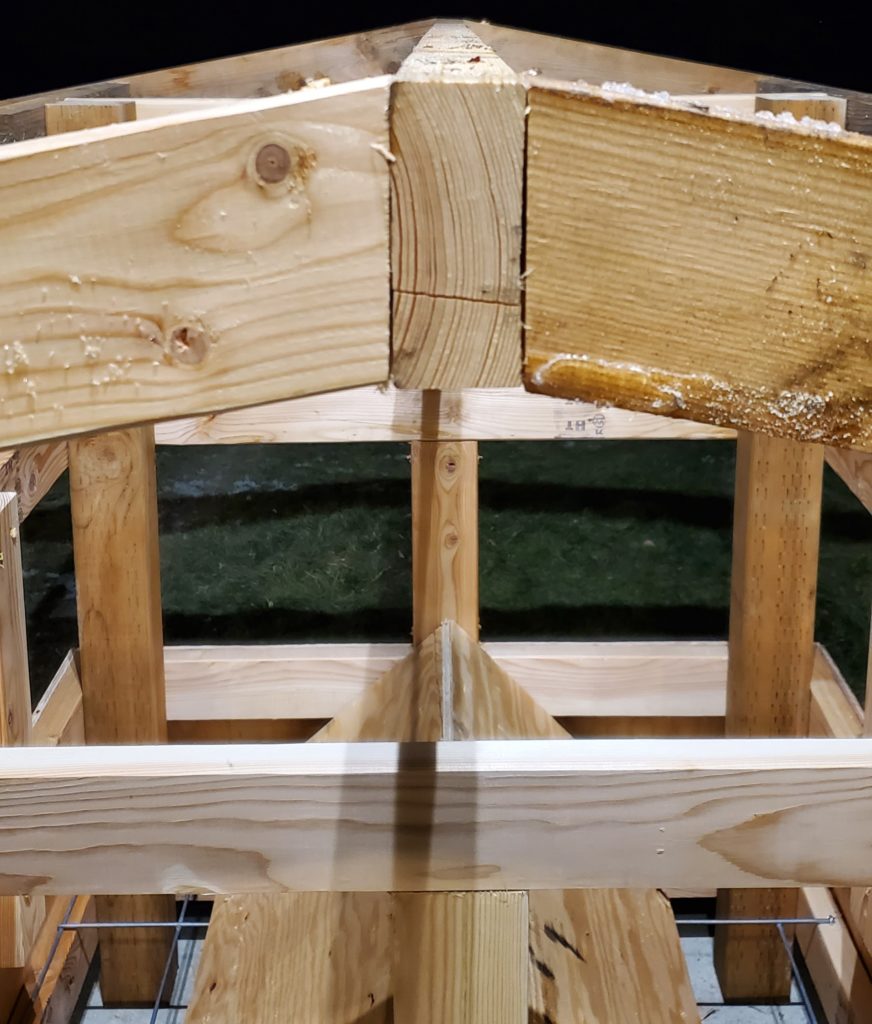
Step 7
After toe nailing to the center ridgeline also fasten to the end of the 69” 2×4 to secure the 47 ¼” trusses as seen below. Repeat Step 6 and Step 7 on all four trusses.
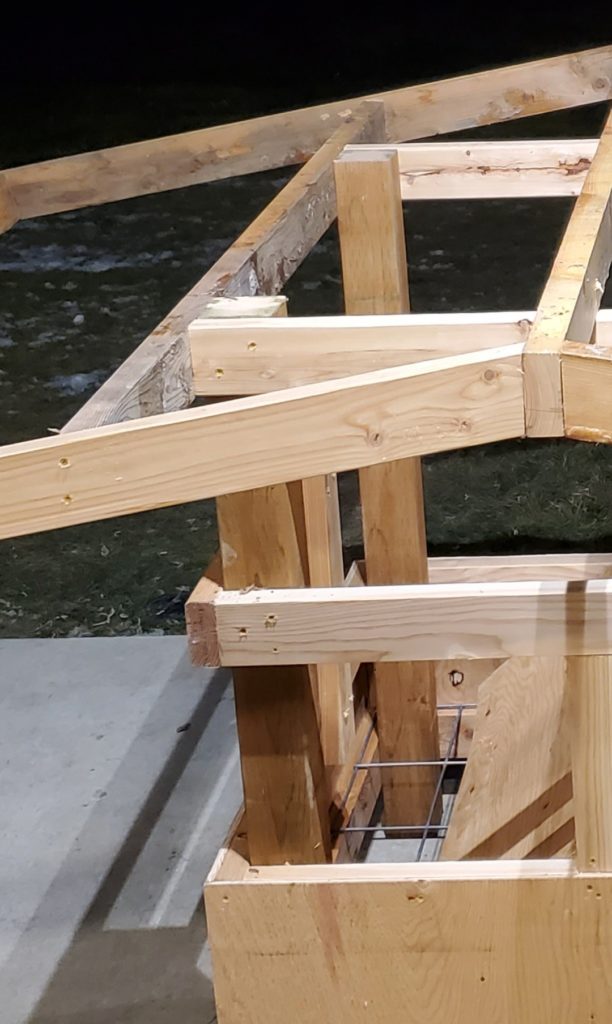
Step 8
Between the tails of the 47 ¼ ″ trusses, fit a 69″ 2×4 and nail from the outside. Repeat on both sides to form the outline of the roof.
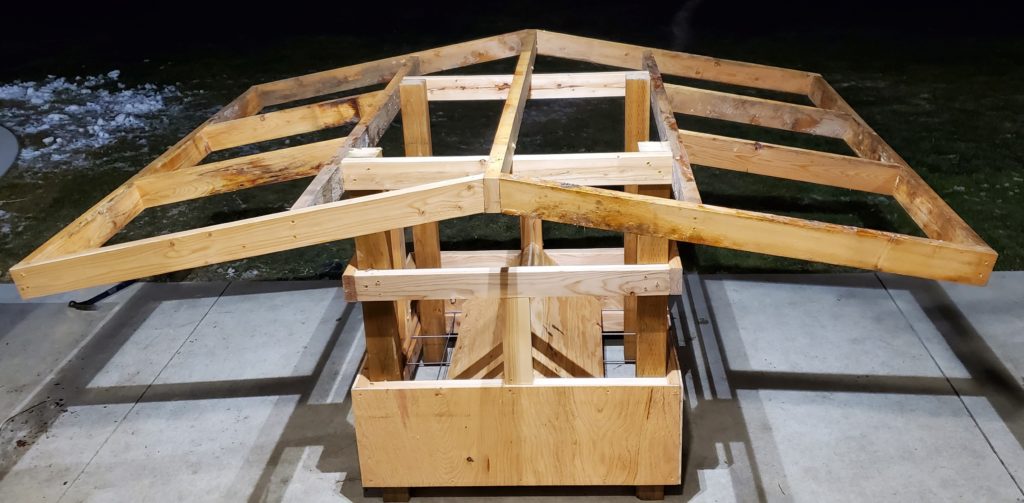
Step 9
On the 37″ caps and the 69″ end, measure and mark 24″ from the outside edge. This will mark where the 26 1/4″ trusses will be nailed.
Step 10
Nail from the top a 26 1/4″ 2×4 truss cut at a 12-degree angle to each of the center marks, 24″ in from the outside edges.
Step 11
Again, nail on the square ends from the outside of the 69″ side, 24″ in from the outside edge.
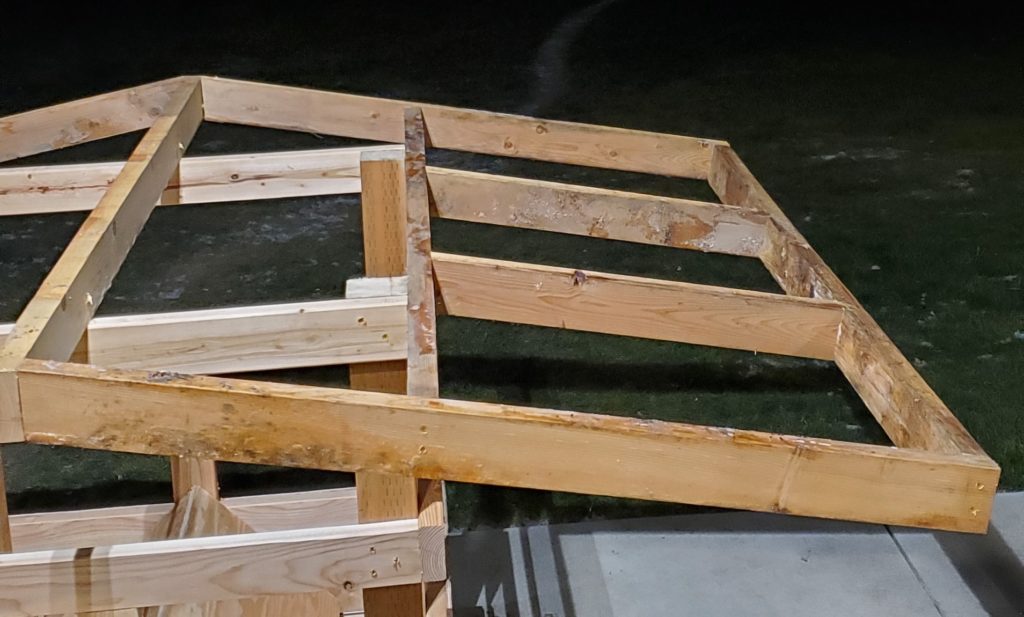
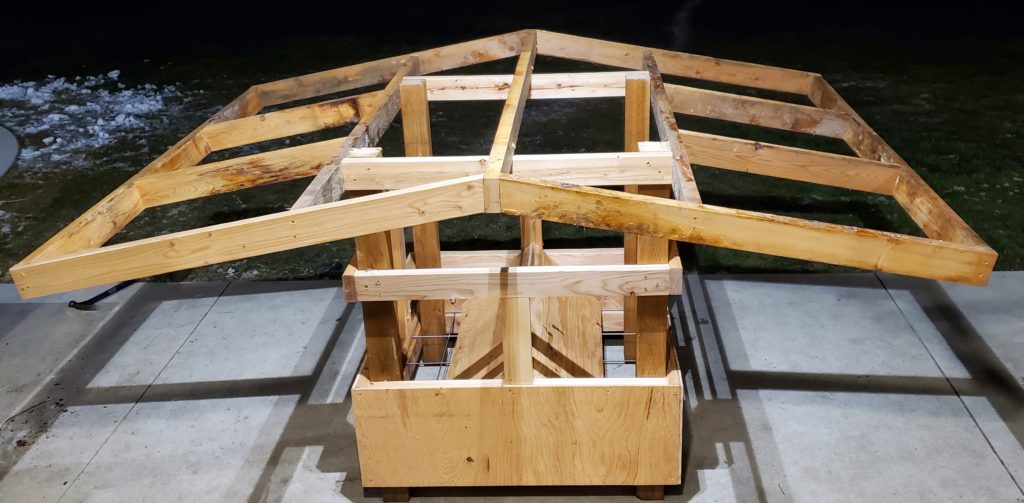
Step 12
Nail a 48″ x 72″ sheet of 3/8″ plywood to the top of this frame. But sheets up to the center of the ridgeline. Screw or nail one length and be sure the framing is square before fastening the other sides.
Step 13
Using a straight edge, mark lines above each 26 ¼ ″ truss and across the 69″ caps and nail about every 4″ on these lines to fix the sheet in place. Marking the framing out on the sheeting will ensure that you are fastening to the framing.
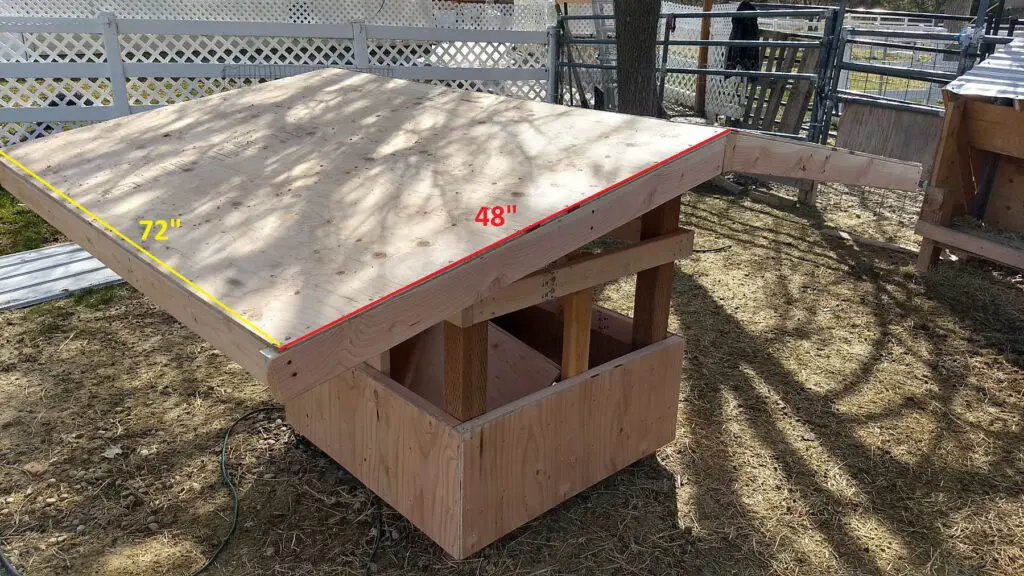
Step 14
OPTIONAL, attach sheet metal or other roofing

